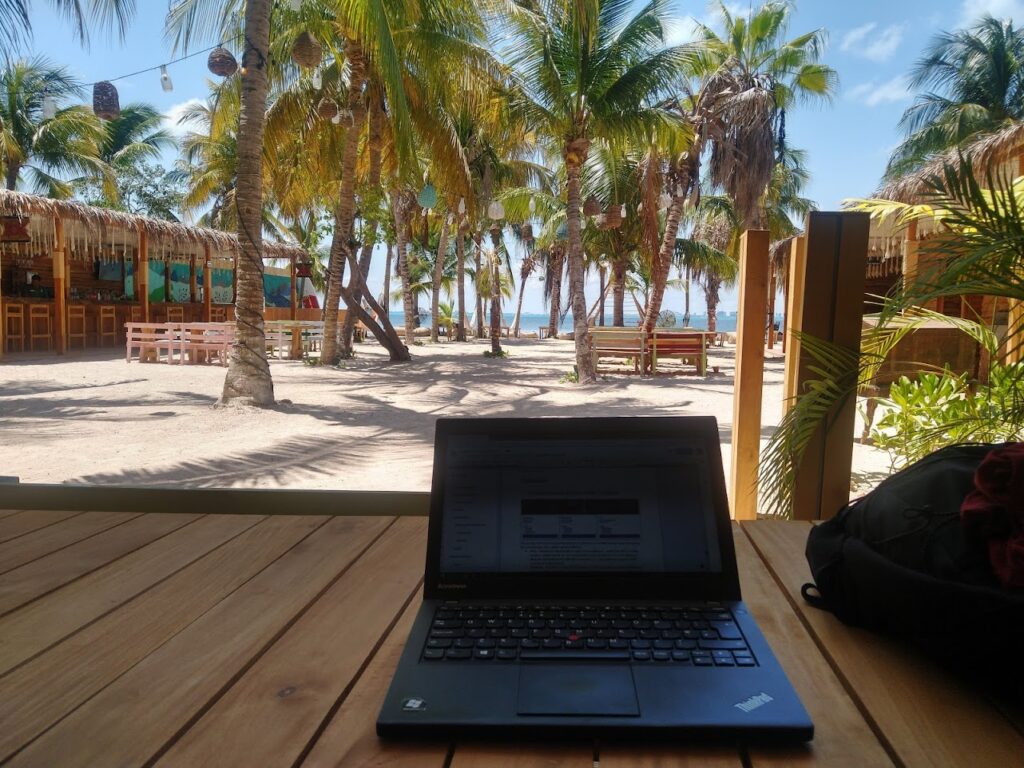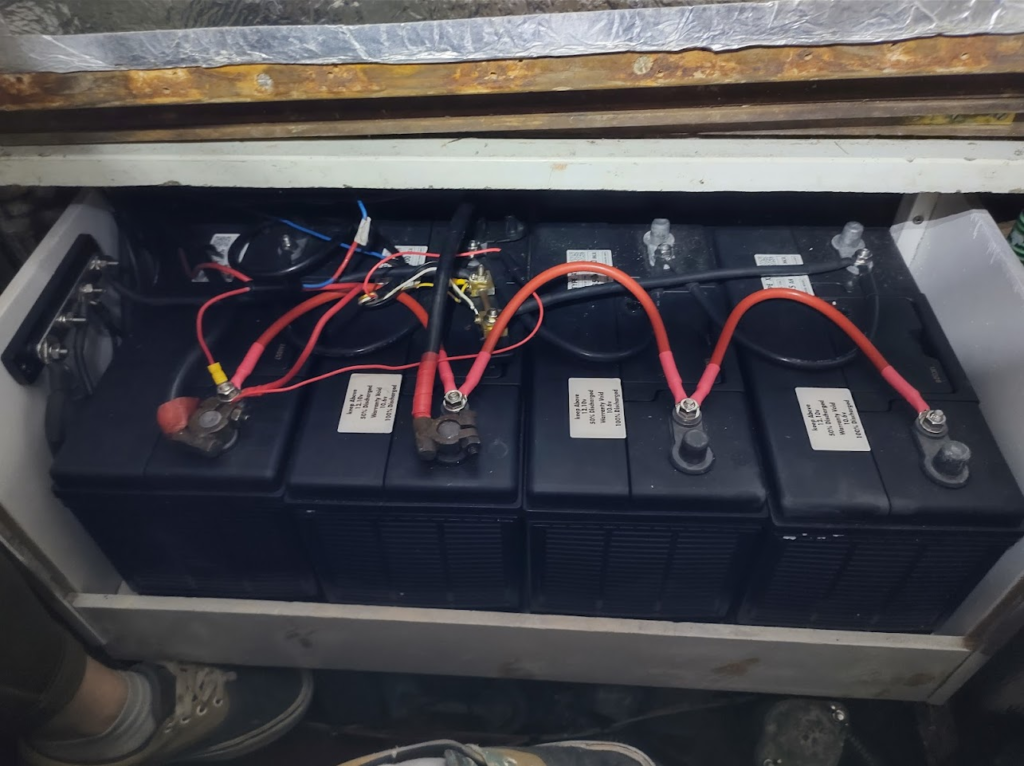A digital nomad boat experience
I have always been somewhat of a digital nomad in my working life, an opportunity that mainly exists due to my very flexible job as a software engineer at Wikimedia Germany.

Over the years I have been primarily based in the UK but have travelled with work to California, South Africa, Israel and many places in Europe, among others.
As well as these work trips, I managed an extended vacation in 2019 through Central America where I worked around 10 hours per week, as well as other hops to Portugal etc.
This is the part that I find myself attempting now again in 2022. But rather than Central America, it will be “the world” on a boat, with slightly less regular mobile data connection.
On previous trips, I didn’t really blog much, at least not about the travel. The one post I have from around 6 months in Central America was a post detailing travel between 2 places. And for work trips, if I blog I focus on the work aspects, such as this post on the Lyon Wikimedia Hackathon. I want that to change with this sailing adventure.
In fact, as I write this I am in the middle of the bay of Biscay, and I just listened to Between the Brackets episode 117 where Yaron and Brian mentioned my little adventure. (Partly the reason I decided to write this post). So here are some more details about the plan.
For more sailing details and to follow along, you might also want to check out sailinghannahpenn.co.uk where there will be more sailing content this year. There are already posts covering the first 50+ days of sailing!
The boat
The boat, named Hannah Penn is a 38ft, 50-year-old Camper and Nicholsons 38. First and foremost, this is not my boat, I am primarily a passenger onboard for part of anothers journey to Canada. That said, I have had my hand in various areas during the preparation, particularly electronics.
We were hard at work on the hull just prior to setting off on this adventure, and here is a quick before and after picture.


The general planned route as it stands is to depart the UK, head down the western coastline of Europe, and hop across to Morocco, the Canary Islands, Cape Verde, the Atlantic, Caribbean and Panama, where around February 2023 I would depart. She would then continue into the Pacific and up to Canada.

Most of the trip to Panama should be mostly within the land of mobile data, hence some of the choices below.
Digital nomad equipment

As with my travel in 2019, I plan on working on average 10 hours per week throughout my travels (with the exception of ocean crossings).
I could probably just about manage this work with a regular laptop and cell phone to tether from, or by popping ashore to get work done.
If I had all of the money in the world I may be able to get permeant (but slow) satellite internet aboard, or perhaps the slightly cheaper offering from SpaceX Starlink that just hit the market, though this is still pricey at 10,000 USD up front and 5,000 USD per month.
Some folks have managed to put the regular Starlink dishes on their boats for fast internet while stationary, or while moving in flat waters, but this is still not ideal (and technically against the terms of use?)
I find myself somewhere between my approach for previous trips, and the dreamy future of a gigabit down while at sea.
Devices & Power
Hannah has 4 brand new leisure batteries aboard with 135ah capacity each, totalling 540ah. (4x Advanced XD35 Dual Purpose Leisure Battery 135ah)

If we consider the fact these batteries should not be discharged below around 40% (normally more like 50%), then that gives us approximately 324ah to use.
Putting this in some context, the battery on my current Lenovo T14 that I use for work is 50Wh. Hypothetically this means that I should be able to charge the laptop 77.7 times fully. In practice, there are many other things that use power aboard, and also inefficiencies moving between batteries and converting between voltages.
The batteries are charged with 2 solar panels, 1 wind turbine and when running the engine as well. We are still figuring out what a typical day brings us in terms of charge, but roughly 70ah per day has been accurate for some of the early weeks of the trip in the UK.
Digital Yacht 4GConnect

In the past I have used a Skyroam Solis hotspot for 3G connection with great success. I wanted to try something new that would take advantage of the tall masts of the boat if possible, and that is where the Digital Yacht 4GConnect comes in (after lots of reading, research and comparisons).
The 4GConnect uses two antennas that you put on your mast and a 4G modem onboard which you need to insert a sim card. And voila, you have a 4G connection, with improved range, that can be shared between multiple devices aboard.
A full review of this will come later, along with my thoughts on current sim card options. But for now, let’s say it is good, and I even get signal between 10-30 nm from land.
Digital Yacht WL510

The WL510 works well in conjunction with the 4GConnect. You can connect to WiFi networks that you have the credentials for, or that are open to the world. This can be joined to the existing 4GConnect WiFi network with failover between the 4G and WiFi backend internet.
The range of the WL510 is nothing when compared to the 4GConnect. But the same could be said between WiFi & 4G generally. I have been able to connect to some WiFi networks that are seemingly a mile away, but it certainly works best in a marina setting.
Captive portals can be a little annoying to deal with, but as with the 4GConnect I’ll try to write all of my thoughts up in a separate post soon.
How is it going?
So far so good, I have managed to work when needed and have made use of both the 4GConnect and WL510.
Since we launched in the UK we have already added an extra solar panel to bring the total to 2 and I am already on a second sim card in the 4GConnect as the first one didn’t really live up to expectations (more on these sim cards in future posts too).
It’s a pretty unique experience working away on a laptop, with the sea extending out in front of you, when suddenly a pod of dolphins pops up to play. I don’t have a picture of that, but here is a picture I shared on Twitter a few weeks back.
[…] A digital nomad boat experience […]
[…] As the application continued to evolve, and the scams changed, some of the detected videos were incorrectly detected as bad when they were perhaps good. This was due to the list of bad domains being automatically generated from previous matched videos, so once a single incorrect domain name got into the list, more false positives would occur. Somehow youtube.com ended up on the list of bad domains (whoops)… This was one of the reasons I decided to sunset the project this week (rather than try to maintain it while sailing) […]
[…] of this year of sailing, I wanted to ensure I had as many high quality connectivity options as possible. As already […]
[…] of this adventure, and other technical details of the boat, batteries, antennas and work, read the digital nomad boat experience post […]
[…] The trip has resulted in some alternative blogging about sailboats, and much of which has been on an entirely separate blog https://sailinghannahpenn.co.uk. […]
[…] planned on blogging being one of my relaxing hobbies while sailing around the Atlantic Ocean ⛵, and though we managed to keep a sailing blog up to date I found it extremely hard to write […]